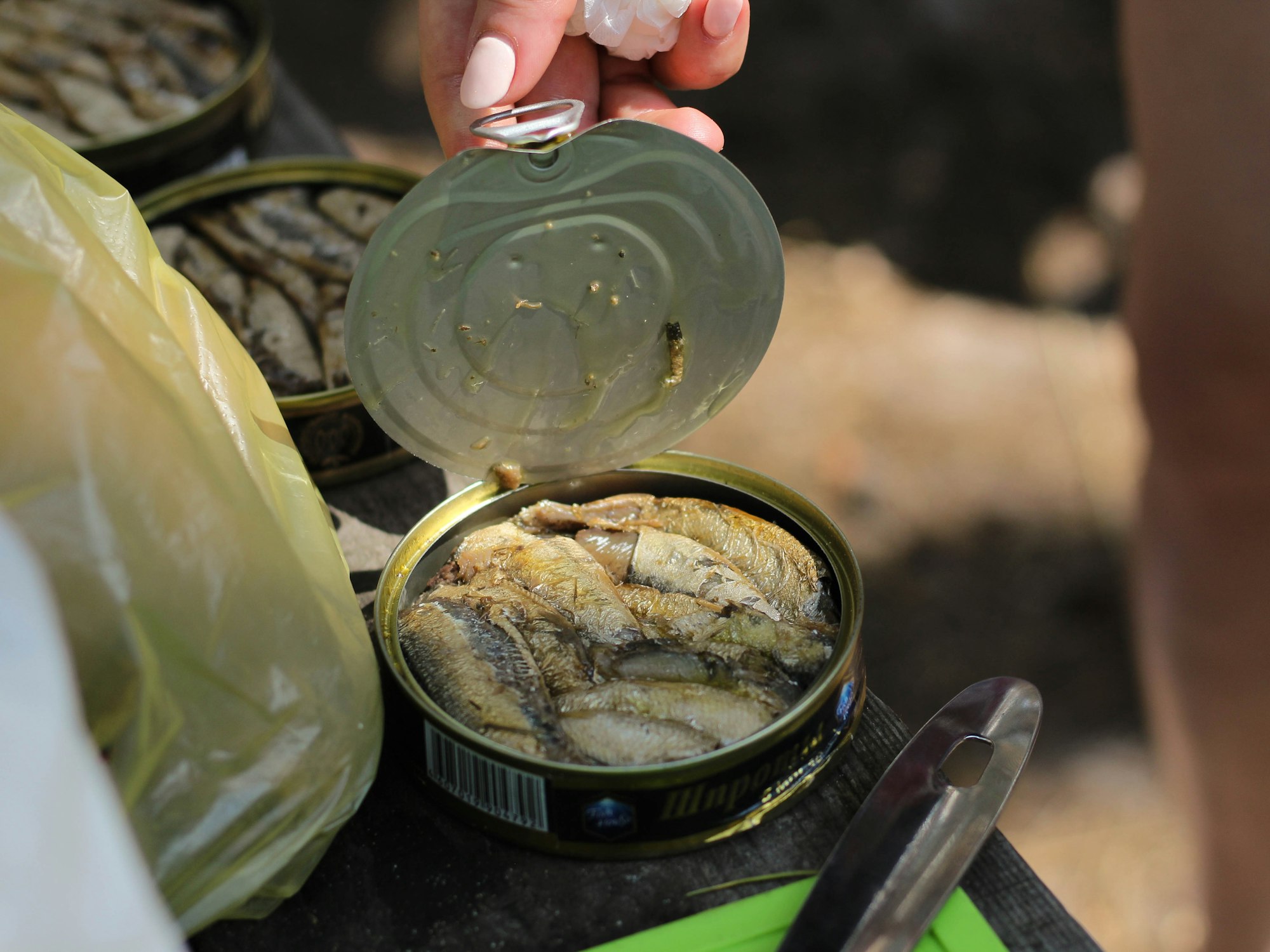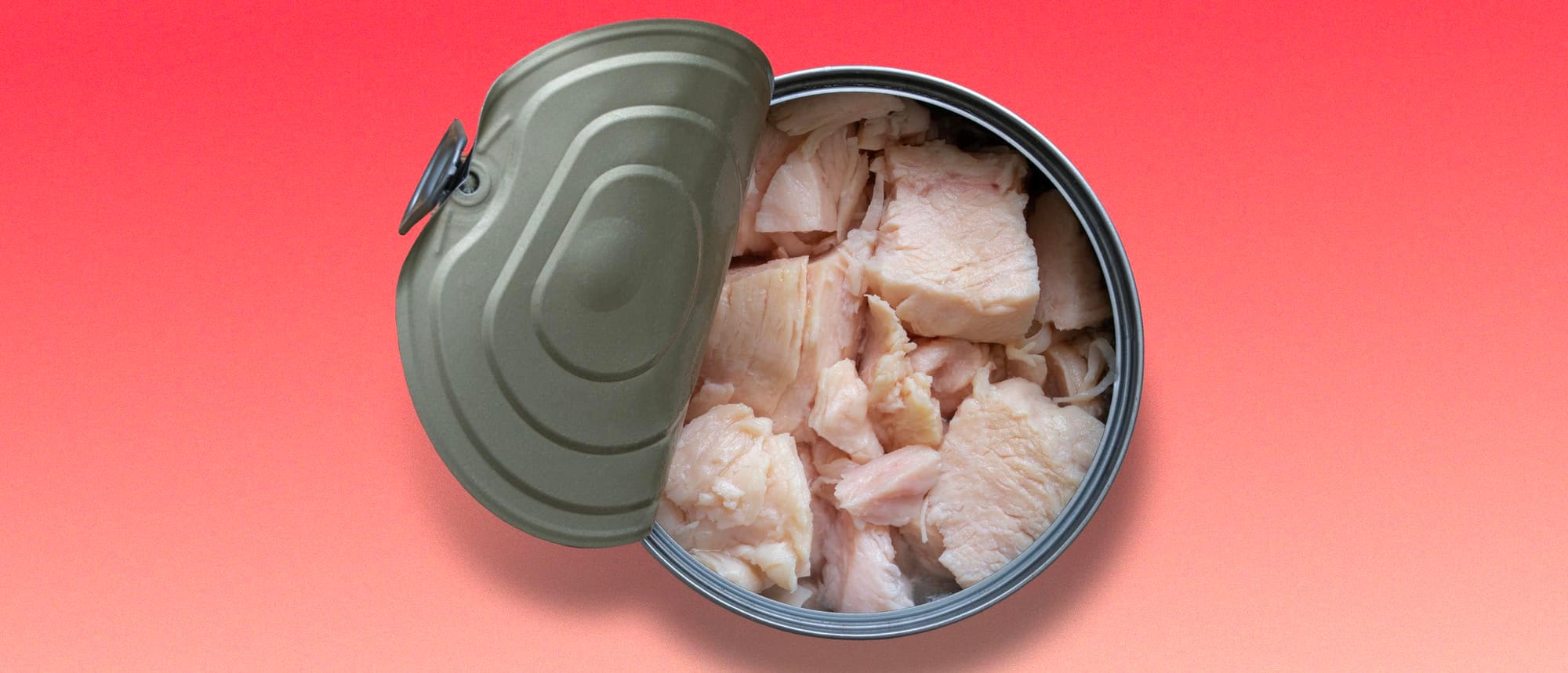Canned Green Beans: Choosing The Best Brands And Varieties

When it comes to pantry staples, canned green beans often make the list, they're versatile, affordable, and convenient—perfect for everything from last-minute side dishes to hearty casseroles. But not all canned green beans are created equal. With so many brands and varieties available, how do you choose the best one for your needs?
In this review, we'll be taking a closer look at some of the most popular canned green beans on the market. We'll assess their flavor, texture, nutritional value, and overall quality to help you make an informed decision.
Whether you're a seasoned cook or just looking to simplify your meal prep, our comprehensive guide has got you covered. Let's dig in!
How We Choose Our Best Canned Green Beans
It's overwhelming trying to find the best products out there that fit your budget and needs. And with so many options on the market, it's hard to trust which ones are really worth your money.
Even if you read through thousands of reviews and personally test each product, there are still variables at play that can leave you feeling unsure. Plus, let's be real, most products are just trying to grab your hard-earned money.
That's where Kiki steps in. Not only has he done the legwork for you by researching and testing products, but he also uses his unique ability to energetically test them with a pendulum. This gives you a clear scale of how good the quality of a product truly is.

Canned Whole Green Beans From Del Monte
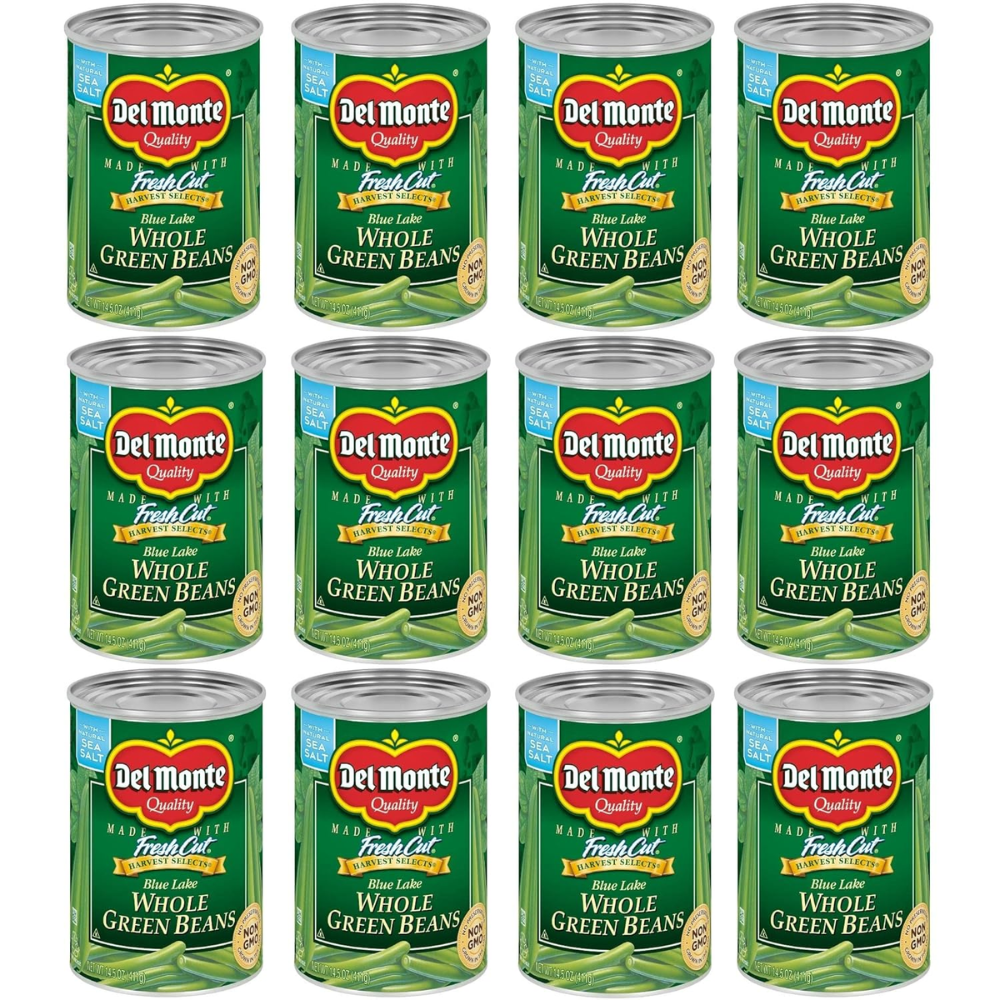
#1 Best Canned Green Beans
14.5 Ounce Can (Pack of 12)
Energy Test Levels: 9.5/10
What's Good About It
Del Monte Harvest Selects Blue Lake Whole Green Beans Canned Vegetables are the perfect addition to any meal for those looking for a hassle-free and nutritious option.
Made with high-quality greens grown in the U.S.A. and harvested at peak freshness, these canned green beans are carefully packed to preserve their rich and delicious flavor.
The addition of just a hint of natural sea salt enhances the already sweet taste of these Blue Lake Del Monte green beans, making them a tasty and versatile side dish. Whether you're in the mood for a classic holiday green bean casserole or a simple side for your favorite chicken dish, these canned whole green beans have got you covered.
And the best part? They contain no preservatives and are non-GMO, so you can bring the natural goodness of the earth to your dinner table with every bite. So why wait?
Grab a can of Del Monte Canned Green Beans and elevate your meals with the goodness of high-quality, all-natural ingredients.


Canned Cut Green Beans From Green Giant
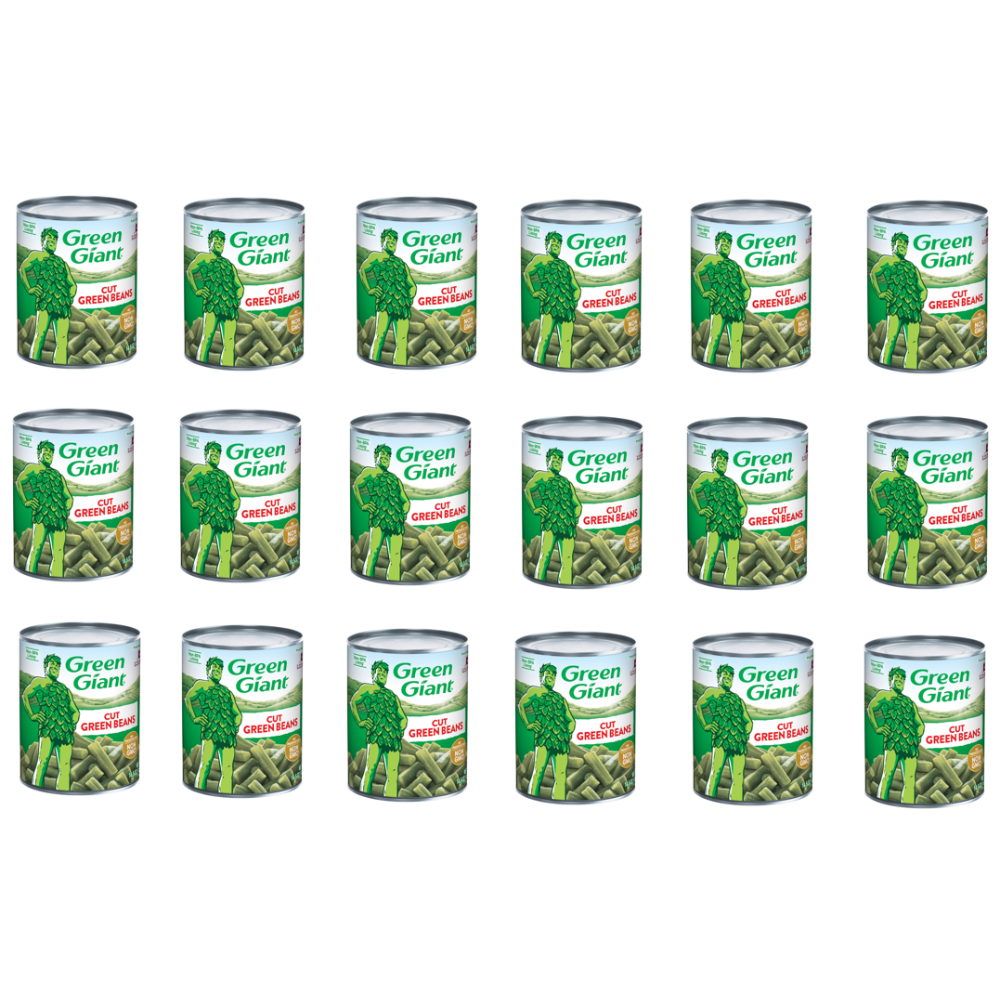
#2 Best Canned Green Beans
14.5 Ounce Can (Pack of 24)
Energy Test Levels: 9.5/10
What's Good About It
Looking for a tasty and nutritious addition to your meals? Look no further than Green Giant's Canned Cut Green Beans! These delectable green beans are not only delicious but also packed with essential nutrients and free from any harmful additives.
Sourced from fresh and non-GMO ingredients, you can enjoy these green beans guilt-free. The rich and tender texture of each bean will leave your taste buds dancing with delight. Whether you're cooking up a hearty stew, creating a healthy salad, or simply looking for a quick and easy side dish, Green Giant's Canned Cut Green Beans will elevate any meal to the next level.
Say goodbye to bland and boring vegetables and hello to the vibrant and flavorful taste of Green Giant's Canned Cut Green Beans. With no synthetic preservatives, these beans are as close to nature as you can get. So not only are they good for you, but they're also good for the environment.
These canned green beans are a versatile and convenient pantry staple that can be enjoyed all year round. They're the perfect addition to your busy lifestyle, saving you time and effort in the kitchen.
Plus, their long shelf life means you can stock up and have them on hand for whenever a craving strikes.
Join the millions of satisfied customers who trust Green Giant for their vegetable needs. With their dedication to quality and freshness, it's no wonder why Green Giant's Canned Cut Green Beans are a household favorite.

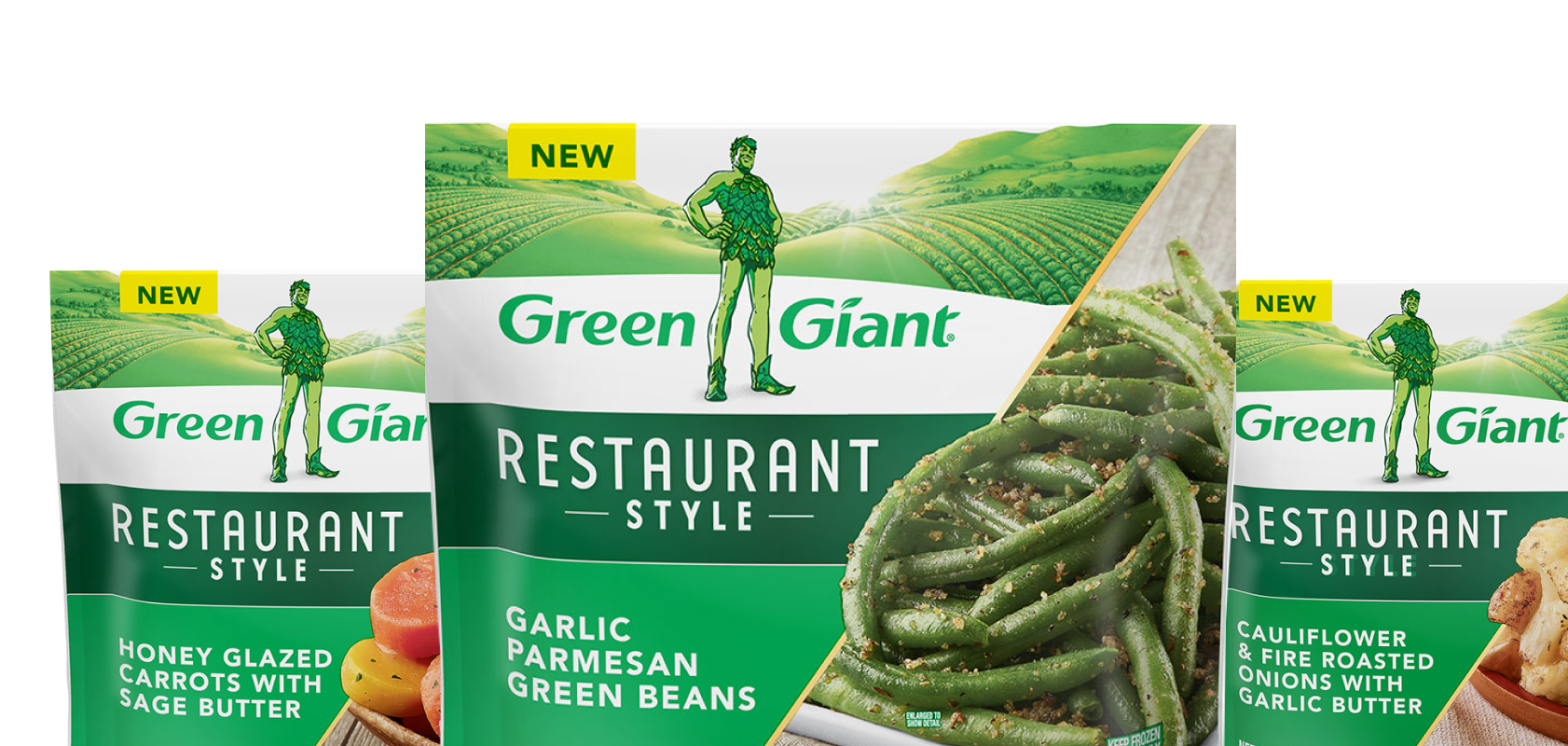
Canned Green Beans FAQs
Are you tired of endlessly searching for answers to your questions about canned green beans?
It seems like every time you think you've found the answer, another question pops up. And let's face it, not all information on the internet can be trusted.
That's why we created our FAQs - the ultimate resource for all your canned green bean inquiries.
With answers to the most frequently asked questions, you can finally have peace of mind knowing you have reliable information at your fingertips. No more wasted time and frustration, become a canned green bean expert in no time!
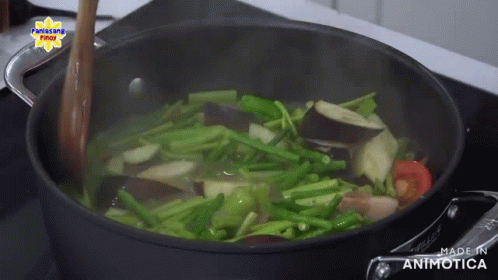
Can Dogs Eat Green Beans?
Yes, dogs can eat green beans as part of a balanced and healthy diet. Green beans, also known as string beans or snap beans, are filled with essential nutrients that are beneficial for both humans and dogs.
Firstly, green beans are low in calories and high in fiber, making them a great choice for dogs who need to lose weight or maintain a healthy weight. Additionally, the fiber in green beans helps regulate digestion and can prevent constipation in dogs.
But that's not all – green beans also contain important vitamins such as A, C, and K. These vitamins help support vision health, boost immunity and aid in blood clotting. The antioxidants found in green beans can also reduce inflammation in dogs' bodies which is especially helpful for older dogs suffering from arthritis.
Furthermore, green beans are an excellent source of minerals like magnesium and iron. Magnesium is essential for strong bones while iron helps transport oxygen throughout the body – both crucial for maintaining your dog's overall health.
Moreover, many dog owners wonder if they should cook the green beans before feeding them to their furry friends. While raw fresh vegetables can be tough on a dog's digestive system, cooking them makes them easier to digest without losing any nutrients.
It is important to note that when feeding your dog human food such as green beans it should only be given as treats or added to their regular meals occasionally (no more than 10% of their diet). This will ensure your pup still gets all the necessary nutrients from meat or their specially formulated dog food.
Can Cats Eat Green Beans?
Yes, cats can eat green beans as part of a well-balanced diet. While their main source of nutrition should come from high-quality cat food, incorporating some vegetables into their diet can provide additional health benefits.
Green beans are an excellent source of fiber, which is essential for proper digestion in cats. It helps to regulate bowel movements and can prevent issues such as constipation and hairballs. Fiber also promotes satiety, meaning your furry friend will feel full for longer periods, reducing the chances of overeating and obesity.
Furthermore, green beans are low in calories and carbohydrates compared to other cat-friendly vegetables like carrots or peas. This makes them an ideal snack option for overweight or diabetic cats who may need to watch their calorie intake.
One important thing to note is that while some cats may enjoy nibbling on raw green beans occasionally, it's best to cook them before serving. This softens the bean's skin and makes it easier for your feline companion to chew and digest properly.
Another benefit of adding green beans to your cat's diet is its rich vitamin content. Green beans contain vitamins A, C, and K1 along with minerals such as calcium and iron- all essential nutrients needed for maintaining good overall health in cats.
However, it's worth mentioning that not all cats will enjoy eating green beans; every feline has unique tastes and preferences when it comes to food. So don't force-feed your cat if they seem uninterested or unwilling to try them out - there are plenty of other healthy treats you can offer instead!
Can Chickens Eat Green Beans?
There has been much debate surrounding the topic of chickens and their ability to consume green beans. While some may argue that feeding chickens green beans is a harmless and nutritious addition to their diet, others caution against it due to potential health risks. So, what's the truth behind this heated discussion? Let's dive in.
Firstly, it is important to note that chickens are omnivores and have a varied diet. In fact, they are known for being opportunistic eaters, meaning they will consume anything that seems edible. This includes not only bugs and insects but also fruits and vegetables such as green beans.
Green beans do offer a significant amount of vitamins and minerals beneficial for chickens' overall health. They contain high levels of vitamin A, which promotes healthy eyesight and immunity, as well as vitamin C for proper growth development. Furthermore, these legumes are rich in fiber which aids digestion in chickens.
However, there are potential downsides to feeding green beans to chickens. One major concern is the presence of lectins - plant proteins found in many vegetables including green beans - which can be toxic if consumed in large quantities by animals such as poultry birds. Additionally, some experts suggest that excessive intake of green beans could cause digestive issues such as bloating or diarrhea in chickens.
So how should chicken owners proceed when it comes to incorporating green beans into their flocks' diets? The key lies in moderation and preparation. It is recommended to introduce small amounts of cooked or soaked (to eliminate any lectin content) green beans gradually over time rather than abruptly changing their diet.
Moreover, it is crucial for chicken owners to properly clean and prepare fresh produce before offering it to their feathered friends. Thoroughly washing vegetables like green beans helps remove any harmful chemicals or bacteria present on the surface.
How To Can Green Beans?
Canning is a popular method for preserving food, and green beans make for a delicious and nutritious option. Canning green beans not only allows you to enjoy them all year round but also ensures that you have access to fresh produce even when it's out of season.
Firstly, it's important to note that canning green beans should be done with proper equipment and following strict safety guidelines. This includes using clean jars, lids, and bands, as well as a pressure canner specifically designed for canning vegetables.
Once you have gathered all the necessary materials, the first step is to wash your green beans thoroughly. Pay special attention to removing any dirt or debris from the ends of each bean. Next, trim off any excess ends and cut them into evenly sized-pieces.
It's recommended to blanch the green beans before canning them. This involves boiling them in hot water for about two minutes before immediately transferring them into an ice bath. Blanched green beans retain their freshness longer in storage as well as maintain their vibrant color.
Next comes the actual canning process where the prepared beans are placed into sterilized jars along with some added ingredients such as salt or spices according to personal taste preference. It's crucial not to over-pack your jars as this may lead to undercooking or bursting during processing.
One of the key steps in safely canning green beans is ensuring that they are processed at recommended pressure levels according to your altitude. The USDA provides comprehensive guidelines on how long different types of vegetables need to be processed depending on your location.
After processing in a pressure cooker according to instructions precisely, let the jars cool completely before testing their seal by gently pressing down on their centers (they should feel slightly concave). If there is no movement or slight popping sound upon pressing down firmly then congratulations! Your canned goods are ready to store away!
Can You Eat Green Beans Raw?
The short answer is yes, you can eat green beans raw. In fact, they make for a tasty and nutritious snack when eaten fresh off the plant. But let's delve deeper into the topic and explore some additional information about eating raw green beans.
Firstly, it's essential to understand that not all green beans are suitable for consumption in their raw form. Some types of these legumes may contain harmful toxins such as lectins that need to be broken down during cooking to ensure safe ingestion. Therefore, it's essential to purchase organically grown green beans or ones from trusted sources if you plan on eating them uncooked.
Another factor to consider is personal taste preference. While some people enjoy the crisp texture and slightly bitter taste of raw green beans, others may find them unpalatable or difficult to digest due to their high fiber content. It's always best to give them a try before incorporating them into your regular diet.
It's worth mentioning that consuming raw green beans also provides more significant nutritional benefits than cooked ones because cooking methods like boiling tend to leach out valuable vitamins and minerals such as Vitamin C and potassium (1). So if you're looking for a quick boost of nutrients without losing any through cooking processes, munching on some raw green beans might just do the trick!
Moreover, unlike other vegetables like broccoli or spinach which require slight blanching before eating them in their uncooked state for safety reasons - meaning dipping briefly in boiling water then immediately cooling under cold running water - soaking or washing fresh-picked string beans is enough preparation (2).
Last but most importantly - moderation is key. Despite the many benefits, it's always wise to eat any food in moderation. Eating excessive amounts of raw green beans can lead to digestive issues and bloating due to their high fiber content. It's best to incorporate them in small portions as a part of a well-balanced diet for optimal health.
Which Is Better Canned Or Frozen Green Beans?
When it comes to choosing between canned or frozen green beans, there are a few factors to consider. Both options have their own unique benefits and drawbacks, and the better choice ultimately depends on personal preference.
Canned green beans, also known as tinned or preserved green beans, are harvested at peak ripeness and then quickly cooked before being sealed in a can. This process helps retain much of the bean's nutritional value, making them a good source of fiber, vitamins A and C, iron, and calcium.
One major advantage of canned green beans is their long shelf life. They can be stored for up to 2-3 years in proper conditions without losing significant nutrients or taste. This makes them convenient for stocking up in bulk or for emergency food supplies.
However, one drawback of canned green beans is that they tend to be higher in sodium due to the salt used during the preservation process. Some brands offer low-sodium options which can reduce this issue.
On the other hand, frozen green beans are harvested at peak ripeness but then immediately blanched (briefly boiled) before being flash-frozen. This quick freezing process helps lock in their flavor and nutrition content while preserving their texture.
Frozen green beans have a longer storage life compared to fresh produce but not as long as canned ones. They can typically last up to 12 months if stored properly in a freezer at 0°F (-18°C).
Another benefit of frozen vs canned green beans is that they usually contain less sodium since no preservatives are added during processing. However, it's still important to check labels as some brands may add salt for taste purposes.
When it comes down to taste and texture comparisons between the two options, opinions may vary greatly depending on personal preferences. Canned green beans tend to be softer due to their cooking method while frozen ones maintain more crunchiness similar to fresh ones when cooked properly.
In terms of cost-effectiveness, canned green beans are usually cheaper than frozen ones. However, this can vary depending on the brand and any sales or promotions currently running.
How To Prepare And Serve Canned Green Beans?
Preparing and serving canned green beans may seem like a simple task, but with the right techniques and tips, you can elevate this humble vegetable to a flavorful and nutritious dish. Here's a canned green beans recipe:
- Choose The Right Canned Green Beans:
Before diving into preparation, it's important to choose the right type of canned green beans. Look for cans that say "French-cut" or "whole," as these tend to have a firmer texture and better flavor compared to other types. Additionally, opt for cans with no added preservatives or sodium for a healthier option.
- Drain And Rinse Your Beans:
Once you have your desired cans of green beans, drain off the excess liquid using a colander or strainer. This step is essential as it helps remove any unwanted flavors from the canning process while also reducing the sodium content.
- Add Flavorful Ingredients:
Canned green beans are known for their mild taste, so adding some flavorful ingredients is crucial in taking your dish from ordinary to extraordinary. You can add diced garlic cloves, onion powder or fresh onions, black pepper, thyme leaves, lemon zest or juice - just be creative with what you have on hand!
- Heat Up In A Skillet:
For optimal texture and taste of your canned green beans, avoid microwaving them as it tends to make them mushy; instead, heat them up in a skillet over medium heat until they start sizzling (about 5 minutes). This method will help retain their firmness while also allowing those flavorful ingredients you've added earlier to come together perfectly.
- Add A Touch Of Sweetness:
While savory seasonings work great with canned green beans, you can also add some sweetness by tossing in some honey or maple syrup towards the end of cooking time - trust me; it's heavenly! Alternatively, you could even sprinkle on some brown sugar for a caramelized touch.
- Add Some Protein:
Good canned green beans can serve as a great side dish, but you can also make them a complete meal by adding some protein. You could toss in some bacon or ham while heating them up in the skillet. You can also add canned chickpeas or kidney beans for a vegetarian option.
- Present Them Beautifully:
We eat with our eyes first, and that's why presentation matters! Once your canned beans are cooked to perfection, transfer them to a serving dish and top them with some fresh herbs like parsley or rosemary for added color and flavor.
In conclusion, preparing and serving the best green beans is not just about opening up a can and heating it; it's about elevating this humble vegetable into an impressive and delicious dish through added flavors, proper cooking techniques, and beautiful presentation. Follow these tips, and I guarantee your guests will be asking for seconds!
Best Canned Green Bean For You
In conclusion, it is clear that not all canned green beans are created equal. Kiki's dedication to researching and testing multiple brands has provided us with valuable insights into the best quality products available in the market.
From exploring different varieties, textures, and flavors, it is evident that there are significant differences among canned green beans. However, after thorough analysis and taste testing, we can confidently recommend a few top-notch options that stand out from the rest. Whether you prefer your green beans to be crunchy or more on the tender side, we have got you covered.
And don't forget about those added ingredients that can elevate a simple dish to a whole new level. So next time you're at the grocery store wondering which canned green beans to purchase, remember this blog post and opt for our top picks – your taste buds will thank you!
Thank you for joining us on this journey of discovering the best flavorful canned green beans out there. We hope this post has been informative and helpful in your future cooking endeavors.
Don't forget to share your thoughts and let us know if you agree with our recommendations or have any personal favorites of your own. As always, happy cooking!
Beansfully,
Kiki And His Team

